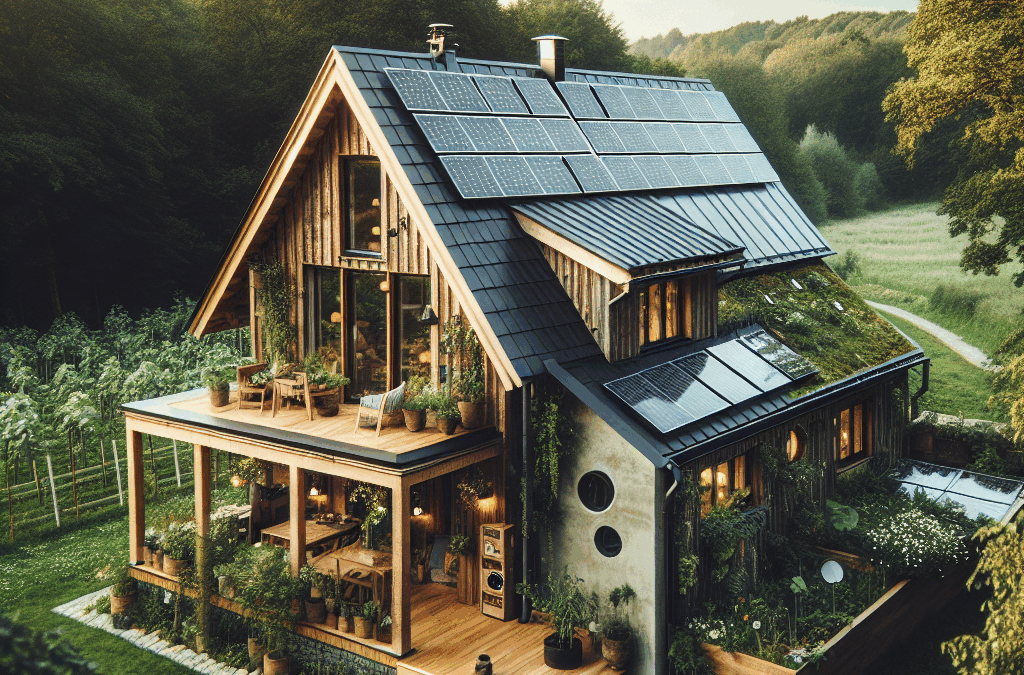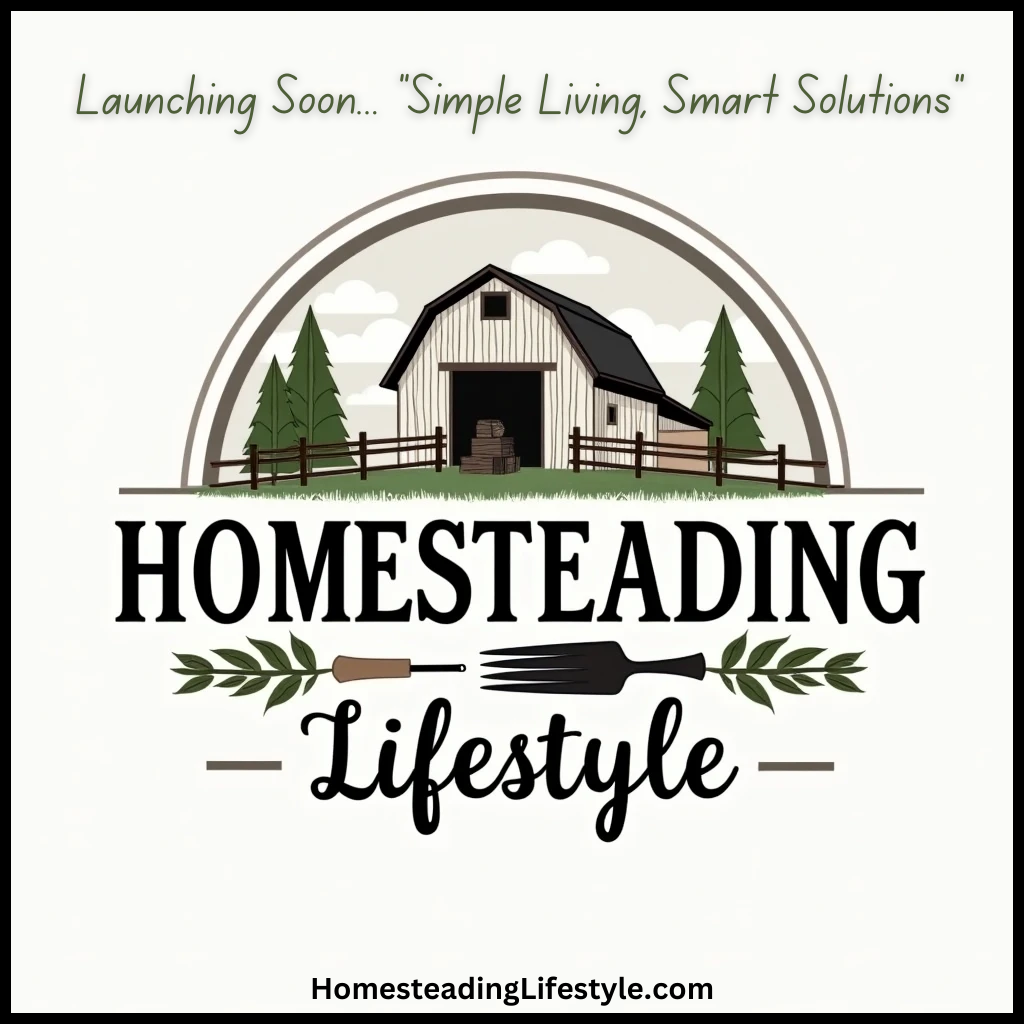Utilizing Reclaimed Wood
Why Choose Reclaimed Wood?
Let me tell you, reclaimed wood is like the star of the sustainable materials show. Not only does it add a unique character to your homestead, but it also helps reduce waste. Every piece tells a story, and incorporating it into your space adds charm that new materials just can’t replicate.
Reclaimed wood comes from old barns, factories, and even other homes. It’s been used before, which means you’re not contributing to deforestation. It’s eco-friendly and stylish at the same time – a win-win, right?
Plus, working with reclaimed wood gives you a chance to engage in projects that are as unique as you are. Think of a rustic dining table or that dreamy garden bench made from vintage timber. You really can’t go wrong here!
Where to Find Reclaimed Wood
When I first started looking for reclaimed wood, I was amazed at how many places I could find it. Local lumber yards are often stocked with their own reclaimed materials, and there are countless websites dedicated to salvaged wood. It’s super fun hunting for hidden gems!
Don’t forget to check out architectural salvage shops. They’re filled with all sorts of treasures, and you might even find doors, windows, or other cool items that can be repurposed in your homestead.
If you’re feeling adventurous, try reaching out to demolition companies. They usually have a stash of usable wood that’s just waiting for a new home. Who knows what you might find – it’s like a treasure hunt!
Incorporating Reclaimed Wood into Your Design
Once you’ve got your hands on some reclaimed wood, the real fun begins! There are endless ways to incorporate it into your homestead’s aesthetic. From accent walls to furniture, the possibilities are practically limitless!
One of my favorite things I’ve done is create a headboard from reclaimed barn wood. It gave my bedroom an instant facelift, and every time I see it, I just smile. You can also use reclaimed wood for shelving, which not only looks great but is super functional too!
Don’t underestimate the impact of smaller details – even a few reclaimed wood picture frames or planters can really elevate the overall look of your space. It’s all about making your farmhouse feel warm and inviting!
Choosing Sustainable Textiles
The Importance of Sustainable Fabrics
When it comes to textiles, it’s essential to go for sustainable options. Organic cotton, hemp, and bamboo are fantastic materials that reduce your carbon footprint while supporting safer farming practices.
Sustainable fabrics are usually produced with fewer chemicals, which is better for both the environment and your health. I remember switching my linens to organic cotton, and it felt like I was getting a premium upgrade at a fraction of the environmental cost!
Plus, sustainable textiles come in so many styles, colors, and patterns. You can easily find something that fits your aesthetic while also making a positive impact. You’ll be living your values while looking good, and who doesn’t want that?
Finding Quality Sustainable Fabrics
Finding sustainable textiles can be a little tricky, but I’ve got some tips! Start by looking for brands that emphasize transparency in their supply chain. They often showcase their eco-friendly practices and certifications on their websites.
Another great resource is local artisan markets. You can often find handmade fabric products that are sustainably sourced, and you’re supporting local businesses at the same time. Plus, chatting with the creators can uncover some fascinating stories behind the products!
Don’t forget online retailers specializing in eco-friendly products. They typically have a broad selection, from home décor items to clothing and linens. You might just stumble upon the perfect piece for your homestead!
Using Textiles for Homestead Aesthetics
Now that you’ve chosen some fabulous sustainable fabrics, let’s talk about how to use them in your homestead. Throw pillows, curtains, and area rugs can all transform a room, adding warmth and texture.
For instance, I’ve created a cozy nook in my living room with eco-friendly cushions and a lovely patterned throw blanket. It’s such a comforting space to relax in after a long day, and I love that it’s made from sustainable materials!
Don’t forget about the outdoor spaces, too! Using sustainable textiles for patio furniture or hammocks can create a serene vibe in your garden. You’ll be chilling out on materials that do good for the planet!
Implementing Green Landscaping Practices
The Benefits of Green Landscaping
Let’s shift gears and talk about landscaping! Green landscaping practices not only enhance the aesthetics of your homestead but also benefit the environment. Whenever I step into my garden, I feel the joy of supporting nature and biodiversity.
Native plants are a key element because they’re adapted to the local climate and require less water and maintenance. They attract pollinators like bees and butterflies, making your garden a bustling haven!
Plus, when you landscape with sustainability in mind, you’re creating a more resilient property. It helps reduce erosion and supports the overall health of the ecosystem. When I see butterflies flitting around, I can’t help but feel proud of my little slice of paradise!
Designing Your Green Landscape
Getting started with your green landscaping can feel overwhelming, but it’s easier than you think! Start small by choosing a few native plants that resonate with you. You can gradually build your garden as you learn what works best in your area.
Another cool idea is to use vertical gardens or raised beds, which are not only space-efficient but can be a striking design element. I’ve always found that planting flowers and vegetables in an organized way really brings a sense of order and beauty to my outdoor space!
And don’t forget about hardscaping! Using permeable materials for walkways and driveways allows rainwater to seep into the ground, reducing runoff and keeping the soil healthy. A well-thought-out hardscape can elevate the overall design while being environmentally friendly.
Maintaining Your Green Space
Maintenance can be key to keeping your green landscape looking spiffy. I’ve found that incorporating composting into my routine has made a huge difference. It minimizes waste and enriches the soil, making my plants happier and healthier.
Regularly mulching your garden beds can prevent weed growth and retain moisture. Plus, it looks great! A well-mulched garden bed adds a polished touch and saves time spent on tedious weeding.
Lastly, consider rainwater harvesting. It’s an excellent way to collect and utilize water for your plants without relying solely on municipal water sources. My rain barrels have not only saved me money but also enhanced my garden’s sustainability!
Creating Functional Outdoor Spaces
The Value of Outdoor Spaces
Having functional outdoor spaces is super important for any homestead. It provides a place where you can kick back, relax, and enjoy nature. I personally have loved spending time in my outdoor space; it’s become my oasis!
Creating a cozy patio or deck with sustainable materials can drastically improve your outdoor lifestyle. Think about it – having a spot to sip your morning coffee surrounded by greenery is worth its weight in gold!
To make your outdoor spaces truly functional, consider how you like to use them. Do you see yourself hosting dinner parties or just enjoying quiet evenings? Tailoring the space around your lifestyle makes it truly special!
Design Ideas for Functional Spaces
When designing these outdoor areas, I recommend mixing and matching sustainable materials. For example, a composite deck paired with wooden furniture can create a chic look while ensuring durability. You can even scour local marketplaces for second-hand pieces!
Creating distinct zones can also enhance functionality. A dining area, a lounging nook, and a small garden can flow seamlessly while serving different purposes. I love having a fire pit area; it’s perfect for cozy gatherings at night!
Don’t shy away from using natural elements like rocks or driftwood as decorative accents. They add an organic feel that complements any style you choose. Plus, they’re often free if you find them locally!
Maintaining and Enjoying Your Outdoor Spaces
Once you’ve crafted your outdoor spaces, keeping them clean and inviting is key. Regular maintenance like sweeping and planting can keep everything looking sharp. I love to spend a little time each week sprucing things up; it becomes a meditative practice for me!
Also, think about incorporating sustainable practices into your outdoor areas. Setting up compost bins, using plants for pest management, and incorporating a few rain barrels can enhance sustainability while keeping your landscapes in check.
Finally, don’t forget to make the outdoors fun! Whether through outdoor games or cozy evenings around the fire, relish in the experience your space offers. It’s all about creating memories that you’ll cherish!
Making the Final Touches with Eco-Friendly Decor
Why Eco-Friendly Decor Matters
Decorating with eco-friendly items is the cherry on top of enhancing your homestead aesthetics. Choosing decor that supports sustainable practices while looking fabulous is so important. When my friends visit, they notice all the thoughtful touches I’ve made, and it’s quite heartwarming!
Using sustainable decor enhances the overall vibe of your home. Whether it’s through furniture, art, or smaller accents, it’s essential to pick items that align with your values and aesthetic. This is how to make your house a true reflection of you.
Plus, supporting local artisans and businesses makes a huge difference. You’re investing in your community and encouraging a culture of sustainability, which is something we all should strive for!
Finding Eco-Friendly Decor
Finding beautiful eco-friendly decor doesn’t have to be a pain. I’ve found success in visiting thrift stores and local artisan markets. It’s like a fun little adventure finding pieces that might fit right into my vision.
Online marketplaces focused on sustainable goods are also a great way to discover unique items. You can often find one-of-a-kind pieces that are made responsibly, adding flair to your space without the guilt!
And don’t underestimate DIY! Upcycling old furniture or creating your own wall art from sustainable materials can be incredibly rewarding. I’ve crafted several wall hangings that complement my homestead vibe beautifully!
Layering Your Decor for Impact
Once you have your eco-friendly decor selected, it’s all about layering to create visual interest. Mixing textures and colors can bring the whole room together. I love including wall art, plants, and textiles to create a warm, inviting atmosphere.
Using natural materials like jute, cork, or wood can enhance your eco-friendly decor while making your home feel grounded. I’ve found that even a simple natural fiber rug adds a cozy touch without compromising sustainable values.
Finally, remember to change things up! Rotate decor seasonally or when you find new treasures. Keeping your space dynamic and fresh will inspire you and maintain that homestead harmony we’re all after!
Frequently Asked Questions
1. What are some sustainable materials to consider for home aesthetics?
Some excellent options include reclaimed wood, eco-friendly textiles, bamboo, and natural stone, which not only enhance aesthetics but also support sustainability.
2. How can reclaimed wood be used in home decor?
Reclaimed wood can be utilized in various ways, such as making furniture, creating accent walls, or building decorative shelves. Every piece has its own character!
3. Why is choosing sustainable textiles important?
Sustainable textiles are grown and manufactured in ways that have less impact on the environment. They are typically chemical-free and better for our health, making them a great choice for any space.
4. Can I create functional outdoor spaces on a budget?
Absolutely! You can use reclaimed materials, DIY projects, and shop at second-hand stores to stay within your budget while creating beautiful outdoor spaces.
5. What are some easy ways to maintain a sustainable homestead?
Start by composting, using native plants in your garden, incorporating rainwater harvesting, and selecting eco-friendly decor. Small steps make a big difference!





